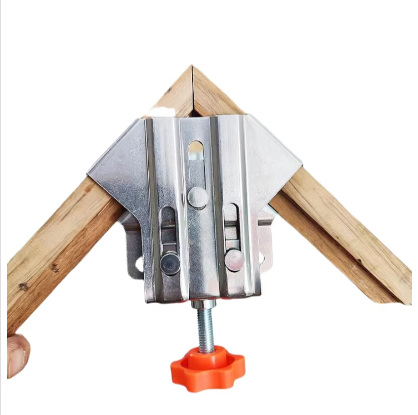Выбор материала для нержавеющей стали U-болты
Марки нержавеющей стали: 304 против 316
При выборе U-образных болтов из нержавеющей стали важно понимать, что отличает сталь марки 304 от марки 316. Большинство людей выбирают сталь марки 304, поскольку она достаточно устойчива к ржавчине и коррозии. Этого вполне достаточно для задач, таких как строительство домов или установка заборов вокруг участков. Однако, если эти болты будут находиться рядом с соленой водой или в среде, где много хлора, например, в бассейнах, то более разумным выбором станет сталь марки 316. Почему? Дело в том, что при производстве стали марки 316 производители добавляют в состав вещество, называемое молибденом. Именно эта дополнительная добавка обеспечивает гораздо лучшую защиту металла от повреждений, вызванных хлоридами, поэтому он дольше служит при установке в суровых условиях прибрежных зон или в оборудовании для бассейнов.
Согласно стандартам ASTM International, механические свойства нержавеющей стали марки 316 превосходят свойства стали марки 304, особенно при повышенных температурах, что делает её идеальным выбором для сложных условий эксплуатации.
Преимущества нержавеющей стали в U-болты
Нержавеющие U-образные болты выделяются своей прочностью, долговечностью и устойчивостью к коррозии. Благодаря этим свойствам, они отлично подходят для сложных условий эксплуатации, например, для крепления конструкций или использования на лодках и в прибрежных зонах, где они постоянно подвергаются воздействию соленой воды и солнца. Даже после многих лет нахождения на улице под дождем, снегом и в условиях экстремальных температур эти болты сохраняют привлекательный внешний вид и надежно удерживают всё так же хорошо, как в первый день. Такая надежность красноречиво говорит об их истинной долговечности.
Исследования отрасли показывают, что эти шпильки выделяются на фоне конкурентов при испытаниях на прочность, что делает их надежным выбором для применения в тяжелонагруженных конструкциях. Их отличие заключается также в том, что они сохраняют свои характеристики под воздействием суровых условий. Строители активно используют их для крепления оборудования на строительных площадках, а механики полагаются на них в автосервисах, где болты ежедневно подвергаются нагрузкам. Даже производители лодок начали переходить на эти прочные крепежные элементы, поскольку они показывают лучшие результаты по сравнению с традиционными вариантами в условиях соленой воды. Высокая прочность и долговечность объясняют, почему представители стольких отраслей возвращаются к использованию именно этого типа болтов.
Измерение диаметра и длины
Выбор стального U-образного болта правильного размера играет большую роль, если мы хотим, чтобы конструкция оставалась на месте и работала должным образом. Прежде всего, тщательно измерьте диаметр и длину. Эти параметры определяют, какой вес выдержит болт и подойдёт ли он к используемой фурнитуре. Возьмите штангенциркуль или, как минимум, измерительную ленту хорошего качества для этой задачи. Также важно, чтобы болт точно подходил к монтажным отверстиям. Если диаметр U-образного болта не соответствует толщине материала, всё может не удержаться так, как ожидалось. Уделите достаточно времени этим измерениям, и все участники процесса будут спать спокойно, зная, что нагрузка равномерно распределена по всем точкам крепления.
Понимание спецификаций резьбы
Характеристики резьбы на шпильках-подковы играют важную роль в том, насколько хорошо они будут работать и подойдут ли по размеру. Большинство шпилек-подков имеют либо крупную, либо мелкую резьбу, и эти типы резьбы подходят для разных задач. Крупная резьба, как правило, позволяет быстрее устанавливать крепеж и лучше фиксируется в материалах, таких как дерево или пластик, поскольку легче врезается в них. Мелкая резьба обычно лучше сохраняет затяжку при сильной вибрации, что делает её идеальной для применения в механизмах. Всегда проверяйте рекомендации производителя относительно их продукции перед покупкой, чтобы убедиться, что шпильки-подковы будут совместимы со стандартными гайками и шайбами. Правильный выбор обеспечивает надежную работу без неожиданных поломок, особенно важно при работе с тяжелыми нагрузками или в агрессивных условиях, где крепеж может подвергаться значительным нагрузкам на протяжении времени.
Экологические и коррозийные аспекты
Морская vs промышленная среда
При выборе U-образных болтов из нержавеющей стали важно знать, в какой среде они будут использоваться. Для мест, находящихся в непосредственной близости от океана или где много соленой воды, устойчивость к коррозии становится особенно важной. Именно поэтому большинство людей выбирают сталь марки 316 для таких условий — она намного лучше сопротивляется ржавчине и разрушению под воздействием морской воды по сравнению с другими вариантами. Сталь марки 316 была специально разработана для тяжелых прибрежных условий, где обычные металлы довольно быстро начинают разрушаться. В то же время, многие фабрики и производственные предприятия предпочитают использовать U-образные болты марки 304. Они отлично работают на промышленных объектах, поскольку выдерживают различные химические вещества, перепады давления и температуры, не выходя из строя. Большинство производителей оборудования знают, что это разумный выбор для их производственных процессов.
Руководства по инженерии коррозии подчеркивают, что срок службы U-болтов может значительно сократиться, если использовать неподходящие материалы в определенных средах, подчеркивая важность тщательного выбора материалов.
Защитные покрытия и отделки
Нанесение защитных покрытий и отделка значительно повышают устойчивость стальных шпилек в форме буквы U к агрессивным условиям, где существует проблема коррозии. Методы, такие как оцинковка или пассивация, создают дополнительные защитные слои, которые предотвращают воздействие влаги и химических веществ на металлическую поверхность. Исследования показывают, что шпильки с покрытием служат намного дольше, чем обычные, при воздействии суровых условий на открытом воздухе или вблизи промышленных процессов. Покрытие формирует защитный барьер, который значительно замедляет образование ржавчины. Это означает, что болты сохраняют прочность и надежно удерживают соединения даже после многих лет воздействия экстремальных погодных условий или химических веществ в производственных условиях.
Соответствуя выбор U-болтов экологическим факторам и используя защитные меры, мы можем обеспечить оптимальную производительность и долговечность этих важных крепежных элементов.
Грузоподъемность и руководство по установке
Оценка предела прочности на растяжение и требований к нагрузке
Знание показателей предела прочности на растяжение для U-образных болтов из нержавеющей стали имеет большое значение при их выборе для любой задачи, где важна грузоподъемность. Фактическая прочность различается в зависимости от того, идет ли речь о марке 304 или более устойчивой к коррозии нержавеющей стали 316, а также, очевидно, зависит от толщины болта. Всегда сверяйтесь с техническими данными производителей, где указаны все показатели нагрузки для разных размеров и марок. Это избавит от множества проблем в дальнейшем, поскольку соответствие технических характеристик потребностям проекта предотвращает возникновение поломок на более поздних этапах. Правильный выбор с самого начала останавливает возникновение различных проблем во время установки и обеспечивает надежное крепление болтов даже при значительных нагрузках, что в конечном итоге защищает конструкцию, которую они поддерживают, от повреждений со временем.
Лучшие практики установки и обслуживания
Получить максимальную отдачу от стальных U-образных болтов означает соблюдение некоторых основных правил при их установке и дальнейшем уходе. Первое, что должен сделать каждый, кто работает с такими болтами, — это внимательно проверить параметры крутящего момента во время монтажа. Правильная затяжка гарантирует, что болт будет выполнять свои функции и обеспечит безопасность людей, находящихся рядом с оборудованием. Не пренебрегайте этим этапом, поскольку неправильная затяжка может привести к различным проблемам в будущем. Обслуживание также не должно оставаться без внимания. Хорошее практическое правило — проверять U-образные болты раз в несколько месяцев на наличие таких признаков, как очаги коррозии или физические повреждения. Многие промышленные предприятия считают, что ежеквартальные проверки подходят для большинства случаев применения. И, конечно, не забывайте о необходимости всего этого отслеживать. Большинство опытных техников подтвердят, что надлежащая документация позволяет избежать многих трудностей в дальнейшем. Записывайте даты установки, использованные значения крутящего момента и отмечайте любые наблюдения, сделанные во время плановых проверок. Эти записи становятся чрезвычайно ценными при выявлении закономерностей возникновения поломок или определении необходимости более ранней замены деталей.
Раздел часто задаваемых вопросов
В чем разница между U-болтами из нержавеющей стали 304 и 316?
Нержавеющая сталь марки 304 идеально подходит для общих применений благодаря своей устойчивости к коррозии. Марка 316 предпочтительнее для морских условий, так как она обеспечивает превосходную устойчивость к хлоридам.
Как измерить диаметр и длину U-образного болта?
Используйте инструменты, такие как штангенциркуль или измерительную ленту, для точных измерений. Убедитесь, что диаметр U-болта соответствует толщине материала, который нужно зафиксировать.
Почему защитные покрытия важны для нержавеющих стальных U-болтов?
Защитные покрытия, такие как оцинковка, повышают коррозионную стойкость U-болтов, увеличивая их срок службы в сложных условиях.
Какие параметры резьбы я должен учитывать при выборе U-болтов?
Выбирайте крупную резьбу для более быстрой установки и лучшего сцепления в мягких материалах, а мелкую резьбу для лучшего сопротивления ослаблению, вызванному вибрацией.
Содержание
-
Выбор материала для нержавеющей стали U-болты
- Марки нержавеющей стали: 304 против 316
- Преимущества нержавеющей стали в U-болты
- Измерение диаметра и длины
- Понимание спецификаций резьбы
- Экологические и коррозийные аспекты
- Морская vs промышленная среда
- Защитные покрытия и отделки
- Грузоподъемность и руководство по установке
- Оценка предела прочности на растяжение и требований к нагрузке
- Лучшие практики установки и обслуживания
- Раздел часто задаваемых вопросов

